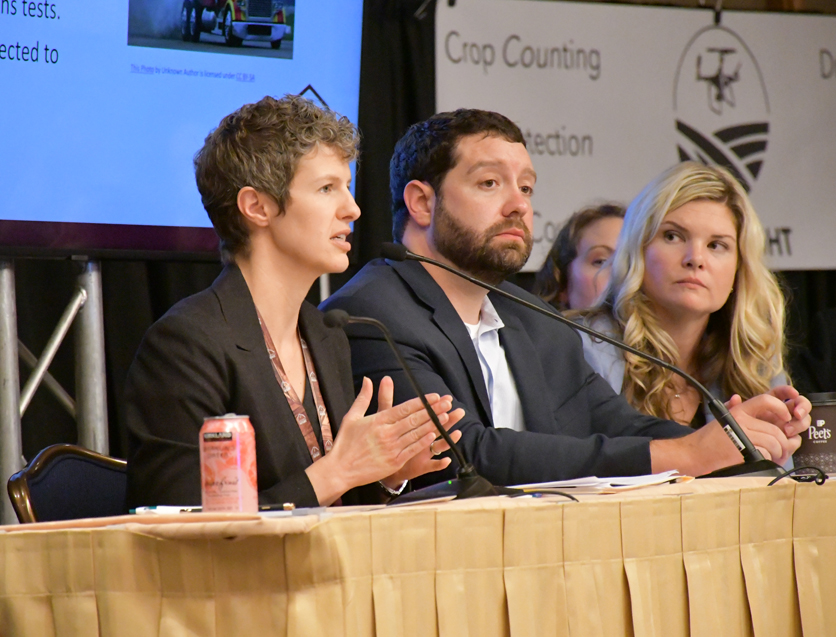California regulators are drafting a proposal to expand water quality monitoring and reporting requirements to wineries statewide. The industry fears the added costs of compliance could cripple small businesses and that the regulation will ignore longstanding commitments by businesses and local governments to achieve sustainability goals—a hallmark of the California wine industry that serves as a valuable branding component as well.
The rulemaking comes as wineries have moved their tasting rooms outside and doubled down on online marketing strategies during the COVID-19 pandemic, and it follows a trade war that has stunted the industry’s rapid expansion into the Chinese market. Wineries are feeling further pain from an oversupply issue that has led to the removal of thousands of acres of vineyards this year. And the draft order is being debated as wineries prepare for harvest, which requires additional planning this year to ensure social distancing and to prioritize the safety of workers.
In a letter last week, trade groups pleaded with the State Water Resources Control Board to not rush the process for the Winery Order, arguing that winery managers are directing their energy to surviving the coming year and not on the many labor and environmental regulations under discussion across multiple state agencies.
“There's still a lot of discussion that needs to happen to make this order focus on addressing water quality and be workable for wineries,” said Noelle Cremers, a policy director for the Wine Institute, during a July workshop on the Winery Order.
U.S. wineries and winegrape growers are expected to lose up to $6 billion this year due to COVID-19, according to a recent report by an industry analyst. Individual wineries will see up to 66% of their revenue lost. About 97% of all wineries will see losses from 36% to 66%, with smaller wineries hit hardest. Markets for on-premise sales and direct-to-consumer sales will each experience an 80% loss. The report anticipates that a full recovery for revenues will not happen until three to six months after a vaccine is widely available.
The Wine Institute, which is leading the industry engagement on the regulation, is calling the Winery Order “arbitrary and capricious,” writing in the coalition letter that the proposal places “unnecessarily burdensome” requirements on businesses “in many cases without adequate justification.”
To comply with the “incredibly complex” order, wineries would need to hire expert consultants, the group claims. The total cost for this, along with the additional monitoring and reporting requirements for discharges, could be as high as $119,000 per year for some wineries, according to an industry analysis.
Cremers argued that many of these are small businesses with just three people managing the winery side. She suggests the State Water Board is confusing the amount of jobs created by wineries with the actual number of employees, adding that about half of California’s wineries are run by one person or a couple and don’t have any employees. About 600 of the 3,600 wineries in the state have fewer than five employees and another 300 have fewer than 10, according to the Bureau of Labor Statistics. This translates to a “very limited capacity” for meeting the order’s requirements.
Jessica Meyer, a policy advocate representing Saint Michelle Wine Estates, argued the order would cause an unreasonable financial burden on the higher-tier wineries as well. She said the requirements would amount to a dozen technical reports related to salt control, soil sampling and well installation, among others.
The order would increase the amount of wineries subject to permitting from about 500 to 2,000. The State Water Board’s intention is to streamline the permitting process, create consistency statewide and allow regional water boards to focus on developing orders for higher-risk activities. Regional staff directors have acknowledged the steep challenges the State Water Board has faced in consolidating the differing approaches to waste discharges into one order.
When two regional water boards and some counties are already regulating water quality at wineries, Michelle Novi, the industry relations director for Napa Valley Vintners, asked why such a regulation should happen now.

State Water Board Chair Joaquin Esquivel
“I would encourage everyone who has a decision-making role in this process to continually challenge the assumptions that are driving the need for these policies, because they do affect people at the singular business level,” she said during the July workshop.
State Water Board Chair Joaquin Esquivel politely pushed back on this argument.
“The fact that it's been a five-year effort I think shows just how cautiously we've approached the discussion and will continue to do so,” he said.
Kari Fischer, an attorney for the California Farm Bureau Federation, said one of the biggest questions is how the order would interplay with the various irrigated lands regulatory programs throughout the state that focus on vineyard management.
Bob Gore, representing various agricultural interests through the Gualco Group, elaborated, explaining that the order requirements overlap with a four-year effort under a separate general order. Gore remained optimistic the State Water Board would address this.
He also referred to a sustainability certification program that addresses water quality as part of its promoted practices. Gore pointed out that CDFA Secretary Karen Ross launched the program nearly two decades ago while she was president of the California Association of Winegrape Growers. At the county level, separate sustainability initiatives have also found success. One in Napa includes about 90% of the county’s vineyard acreage within its enrollment. Sonoma County launched a similar program last year.

Noelle Cremers, director of environmental and regulatory affairs at the Wine Institute
Others at the workshop wondered why the order did not include groundwater data being collected by Napa County.
The Wine Institute argued that an earlier version of the order would have raised the fees for Napa wineries by as much as 4,000% by layering on more regulations. Currently the Winery Order calls for 17 new positions at a cost of more than $3 million to help the board implement the program.
“The proposal seems like an unnecessary and costly increase in staffing,” according to the Wine Institute.
Interested in more coverage and insights? Receive a free month of Agri-Pulse West.
The State Water Board plans to drive the funding for those positions from fees on wineries. In a meeting with stakeholders last week, program managers for the State Water Board laid out a few options for the fee structure based on the current version of the order.
They acknowledged the uncertainty in the estimates and promised to work with the Wine Institute and other stakeholders to revise the numbers as the order progresses. They also raised an option for delaying fees for a year, but cautioned it would lead to programs being understaffed and delays in permits, as well as a spike in fees the following year. They expect to present more changes in September, some based on the public feedback.
Water Board members were receptive to concerns and encouraged board staff to work with the industry on gauging the potential economic impacts of the order. The board will be considering amendments through November.


